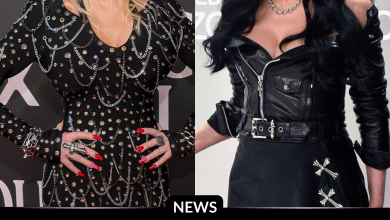Marilyn Monroe’s Secret to Becoming a Hollywood Mogul: Investment in Acting and Public Image Mastery
OPINION: This article may contain commentary which reflects the author's opinion.
Marilyn Monroe, born Norma Jeane Mortenson on June 1, 1926, transformed from an orphaned child into one of the most iconic figures in global pop culture. Known for her acting, modeling, and magnetic presence, Monroe’s empire has endured long after her tragic death in 1962. Her career and financial legacy continue to generate revenue, with Monroe’s estate earning approximately $8 million in 2020 alone through licensing deals. This article explores how Monroe built her empire, from her early career decisions to her strategic management of her public image and her entrepreneurial ventures.
Background and Career Milestones
Monroe’s early life was fraught with hardship, growing up in foster homes and orphanages. She rose from these humble beginnings to become one of Hollywood’s brightest stars. Her career took off when she signed with 20th Century Fox in 1946 under the name Marilyn Monroe, a reinvention that marked the beginning of her rise to stardom. Her early film roles, including Dangerous Years (1947) and Scudda Hoo! Scudda Hay! (1948), were relatively small, but her breakout came with The Asphalt Jungle (1950) and All About Eve (1950). By the mid-1950s, Monroe was one of Hollywood’s highest-paid actresses, a status that reflected her growing influence both on and off the screen.
Founding Marilyn Monroe Productions
A pivotal moment in Monroe’s career came in 1954, when she grew frustrated with being typecast and underpaid by the Hollywood studio system. In a move that would forever change her career trajectory, she co-founded Marilyn Monroe Productions (MMP) with photographer Milton Greene. This bold decision made her one of the first women, after Mary Pickford, to own and operate her own production company. It was an unconventional move that directly challenged the prevailing studio system, granting her greater control over her career and image.
Through MMP, Monroe was able to renegotiate her contract with 20th Century Fox, securing a groundbreaking $400,000 salary for four films over seven years, as well as approval rights for scripts and directors. This deal allowed her to take on roles that appealed to her artistic sensibilities, such as Bus Stop (1956), which showcased her acting talent beyond the glamorous image she had previously been known for. The creation of MMP marked the beginning of Monroe’s empire-building strategy—investing in her career, taking creative risks, and demanding the respect and recognition she felt she deserved.
Investing in Her Craft: Acting Education and Development
Monroe’s commitment to refining her acting skills was another key component of her empire-building strategy. Despite her initial success, she felt the need to deepen her craft, so in 1955, she moved to Manhattan to study at the Actors Studio under the guidance of Lee Strasberg. This marked a significant shift in her career, as she devoted herself to mastering method acting, hoping to dispel the perception that she was merely a glamorous personality.
Her dedication paid off with performances in films like Bus Stop (1956), where critics praised her nuanced portrayal of a vulnerable woman trapped in a small-town love story. This role helped redefine Monroe, transforming her from a sex symbol into a serious actress with a broad emotional range. As contemporary actress Ellen Burstyn later commented, Monroe’s work in the studio was “some of the best work ever seen,” underscoring the success of her acting transformation.
Public Image and Risk-Taking
Monroe’s image was one of the most carefully curated in Hollywood history, and she understood the importance of shaping public perception. Early in her career, she posed for a nude calendar under the pseudonym “Mona Monroe” in 1949. Though controversial at the time, this risk paid off when the photos resurfaced in Playboy’s first issue in 1953, boosting her visibility and public allure. The calendar, originally shot for a mere $50, would later be valued at $6 million, a testament to Monroe’s intuitive grasp of how to leverage her image for both notoriety and financial gain.
Her iconic moment in the subway grate scene from The Seven Year Itch (1955) further solidified her place in cultural history. The image, one of the most famous of the 20th century, encapsulated her sensuality and charm, further cementing her as the epitome of glamorous femininity. Monroe’s ability to take risks with her image, and her willingness to embrace both the allure and controversy of her persona, made her a cultural force that extended far beyond the silver screen.
Leveraging Relationships: Marriages and Publicity
Monroe’s marriages and relationships also played a significant role in shaping her public persona. Her first marriage, to James Dougherty, at the age of 16, ended in divorce in 1946, coinciding with her rising fame. Her second marriage to baseball legend Joe DiMaggio in 1954 was highly publicized but ended after just nine months, primarily due to DiMaggio’s jealousy and controlling behavior. Despite the short duration of the marriage, it was heavily covered in the media and contributed to Monroe’s status as a figure of fascination and intrigue.
Her third marriage, to playwright Arthur Miller in 1956, was more intellectual and marked a shift in her personal and professional life. While the relationship faced its own difficulties, it helped further solidify her image as both a beauty and a woman with intellectual depth, expanding the ways in which the public saw her.
The Enduring Legacy of Monroe’s Empire
Marilyn Monroe’s empire was not just about movie stardom—it was about controlling her image, taking ownership of her career, and building a lasting financial legacy. Despite the tragic aspects of her life, including struggles with mental health and the pressures of fame, Monroe’s ability to craft her public persona and strategically navigate the complexities of Hollywood and public life has left an indelible mark.
Monroe’s estate continues to generate significant revenue, with millions earned through licensing deals for her likeness, films, and branded merchandise. Her influence as a fashion icon remains evident, with her timeless style inspiring designers and celebrities alike. Through her business ventures, her attention to personal branding, and her commitment to her craft, Monroe became more than just a movie star—she became a symbol of beauty, strength, and self-determination that transcended her lifetime.
In the years following her death, Monroe’s legacy has only grown. She is remembered not just for her performances on screen, but for her ability to build an empire that continues to captivate the world, ensuring that her status as an icon remains secure. Marilyn Monroe’s story is a testament to the power of self-determination, reinvention, and the lasting influence of one of Hollywood’s greatest figures.



